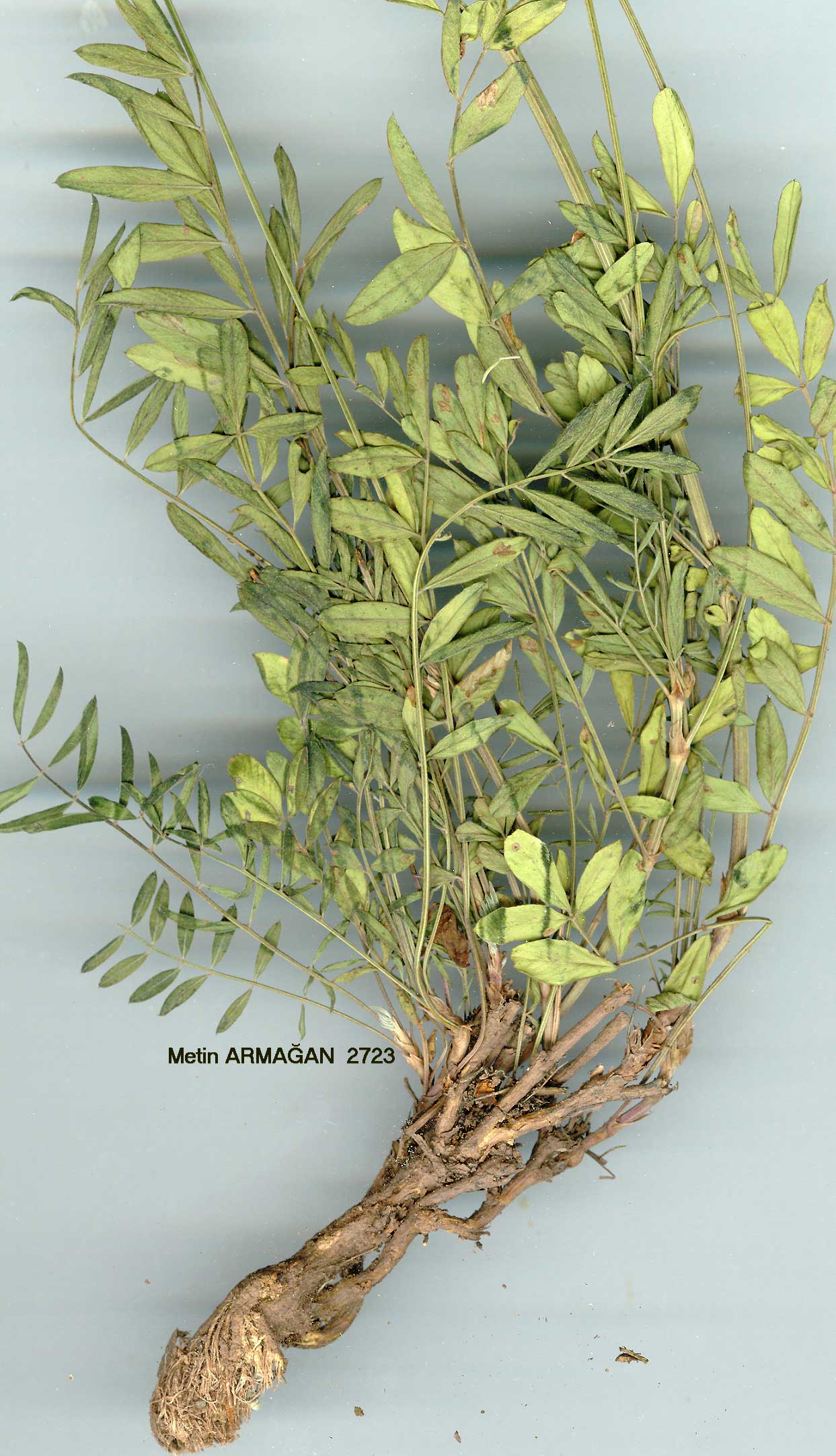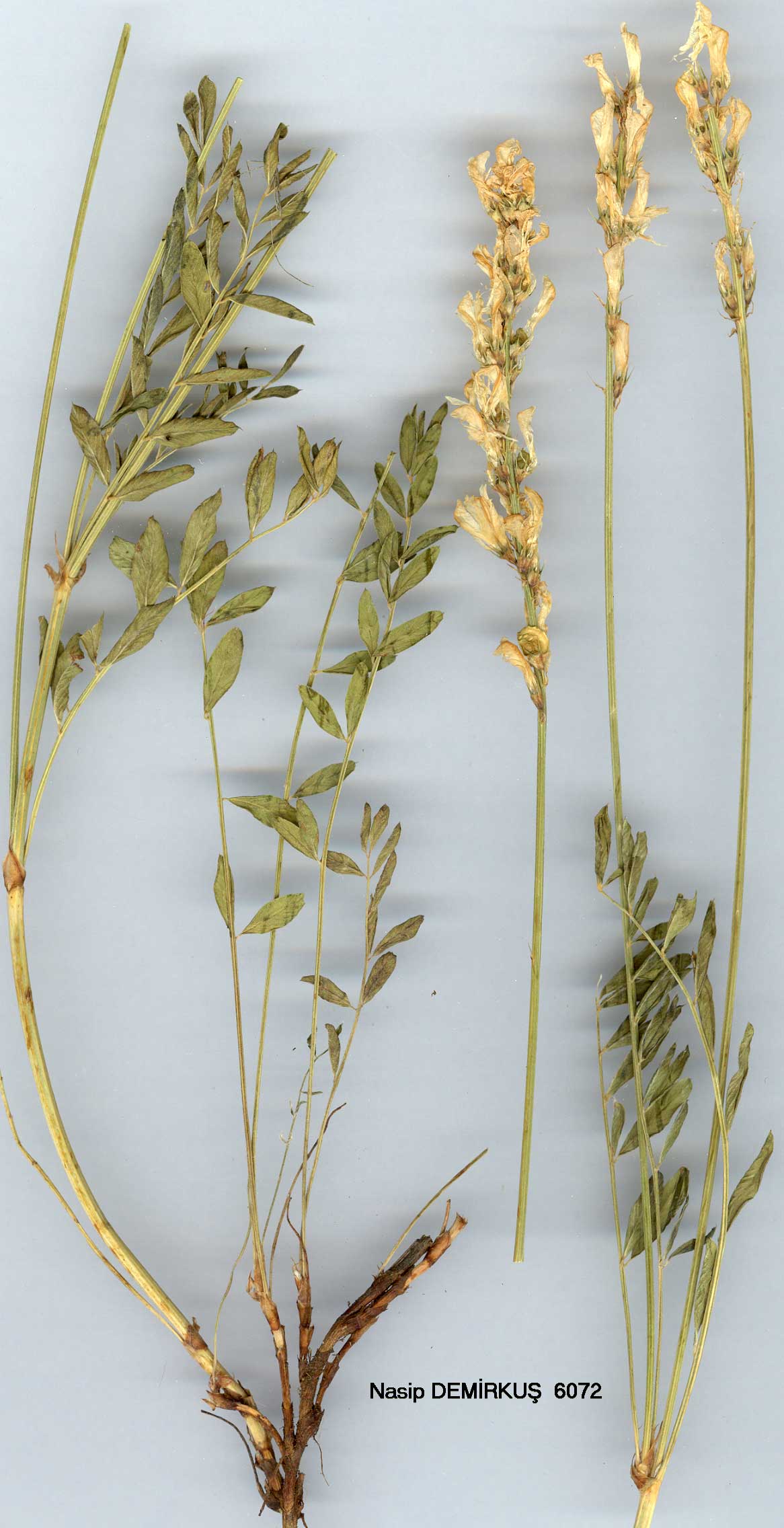| Fabaceae |
|---|
Onobrychis ADANS. |
| O. stenostachya Freyn in Öst. Bot. Zeitschr. 40:446 (1890). Figure 15, p. 585. Procumbent or ascending-erect perennial, 25-50 cm. Leaves with 7-11 pairs oflinear to linear-oblong leaflets, ± sparsely pilose below, glabrous above, 7-20 x 1.5-4 mm: stipules c. 8 mm, scarious margined. Peduncles much longer than the leaves. Inflorescence many-flowered, ± compact, elongating slightly in fruit. Calyx c. 5 mm including teeth 1.5-2.5 x length of tube. Corolla pink or creamy white; standard 8-15 mm; wings 6-9 mm; keel 7-13 mm. Fruit c. 5 x 3.5 mm, unarmed or denticulate on crest and with small hooks on disc. A variable species closely allied to the Caucasian O. petraea (M.B.) Fisch. Although not much material of O. stenostachya has been available for study, three subspecies can be recognised in Turkey. 1. Fruit without any spines or hooks; standard 8-9 mm subsp. krausei 1. Fruit denticulate at margin and with or without short hooks on disc; standard 9-15 mm 2. Calyx teeth 2-2.5 x length of tube; standard 9-11 mm subsp. sosnowskyi 2. Calyx teeth c. 1.5 x length of tube; standard c. 15 mm subsp. stenostachya subsp. sosnowskyi (Grossh.) Hedge, comb. et stat. nov. Syn: O. sosnowskyi -Grossh. in Zap. Nauchno-prikl. Otd. tiflis. bot. Sada 5:162 (1926); O. ruprechtii Grossh. var. oltensis Grossh. 1.c. 158; O. sosnowskyi yar. oltensis (Grossh.) Chint. in Izd. Akad. Nauk Grus. SSR, Monogr. ser. A, no. 3:41 (1960). Fl. 6-7. Dry loamy and shaley hillsides, fallow fields, 1600-2475 m. Described from Turkey, vicinity of Kars (type: TBI). E. Anatolia. A9 Kars: Kars to Selim, 1800 m, D. 30666! Kağizman, 1800 m, Karamanoğlu 66-19 (Hb. Hub.-Mor.). Erzurum: Horasan, 1600 m, D. 29363! B9 Ağri/Erzurum: Tahir geçidi between Aleşkirt and Horasan, 2475 m, Kara-manoğlu (Hb. Hub.-Mor.). Endemic; Ir.-Tur. element. An immature gathering from S.E. Anatolia (C10 Hakkari: 21 km from Bacirge tc Yüksekova, 2230 m, D. 45238!) may be referable to this subspecies, but fruiting material is needed. Subsp. sosnowskyi is represented by several gatherings from Kars and Erzurum and apparently is quite a frequent plant there. Although no specimens of the Caucasian O. angusti-folia Chint. have been seen, a photograph of the type looks very similar to this subspecies. |
 HEDGE _jpg.jpg)
 HEDGE_jpg.jpg)

